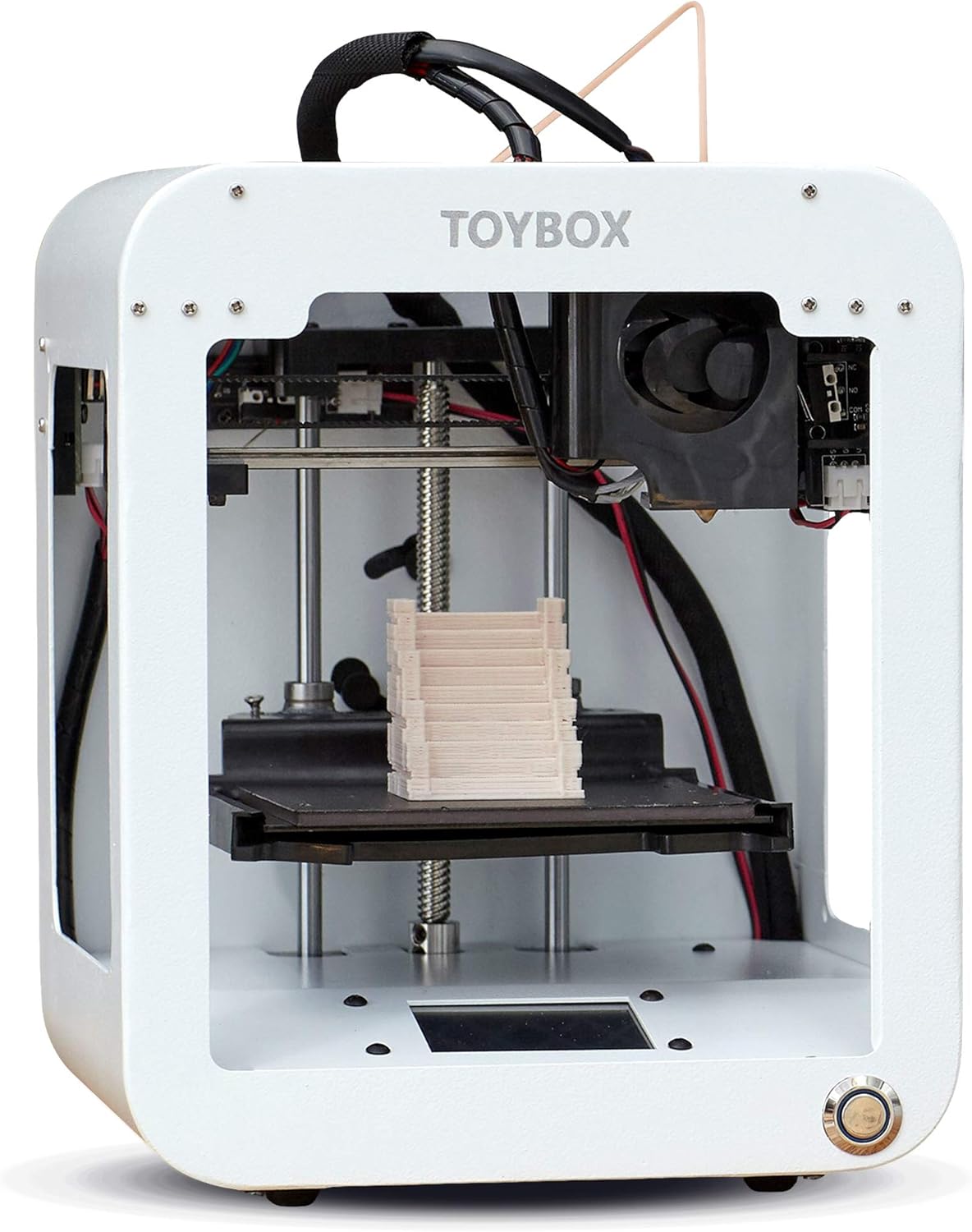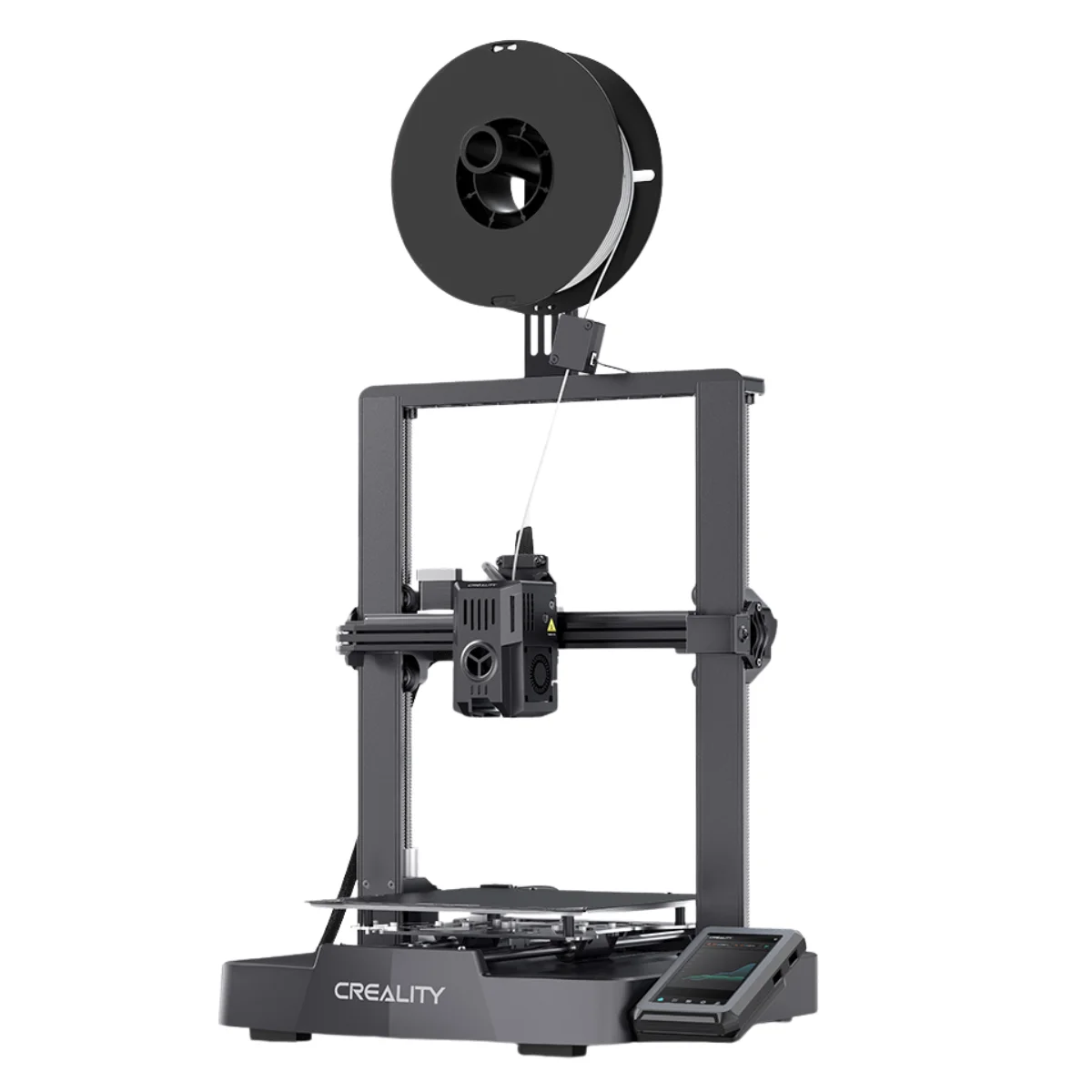Compare Toybox vs Ender 3 V3 KE
Comparison between the best 3D printers
Choose the best 3D printer at the best price. The cheapest 3D printers are here.
Buy a 3D printer here with 3D Fila.
 |
 |
|
| Model | Toybox[BUY Toybox] |
Ender 3 V3 KE[BUY Ender 3 V3 KE] |
| Printing Material | Filament | Filament |
| Buy Filament for Toybox Toybox | Buy Filament forCreality Ender 3 V3 KE | |
| Estimated price | $299,00 | $279,00 |
| Manufacturer | Toybox | Creality |
| Release Year | 2024 | 2023 |
| Print Volume [mm] | 70x80x90 | 220x220x240 |
| Printer Size [mm] | 190x190x230 | 433x366x490 |
| Weight [kg] | 3 | 7,8 |
| Power Loss Recovery | NO | YES |
| Enclosed printer | NO | NO |
| Bed Leveling | Manual | Automatic |
| Filament End Sensor | NO | YES |
| Bed type | Heated | |
| Power supply system | Direct Drive | Direct Drive |
| Standard nozzle | 0,5 | 0,4 |
| Maximum Nozzle Temperature [°C] | 210 | 300 |
| Maximum Bed Temperature [°C] | 100 | |
| Maximum printing speed [mm/s] | 60 | 500 |
| Filament holder | YES | YES |
| Camera for supervision | NO | NO |
| Recommended filaments | PLA | PLA, PETG e TPU (95A+), ASA |
| Recommended slicers | Toybox | Creality Print, Cura 5.0 ou superior, Prusa Slicer, Orca |
| Maximum Resolution [mm] | 0,2 | 0,1 |
| Processor | 32-bit Silenciosa | |
| Display | Touchscreen 2,4'' | Touchscreen 4,3'' |
| Power Supply | 350 W | |
| Connectivity | Wi-fi | USB drive, LAN, Creality Cloud APP |
| Operating systems | iOS, Android | Windows, Linux, Macbook |
| Date of registration in the system | 2024-08-06 | 2024-03-06 |
| Release date | 2024 | 2023 |
| Extra features | The Toybox 3D printer is an excellent option for children and beginners. Easy to use, with intuitive setup and simplified operation via an app. The Toybox allows you to print thousands of toys and projects through a user-friendly interface. It has a removable magnetic table that makes it easy to remove printed objects. The filament is PLA, safe for children, and the printing is reliable and error-free. It also offers custom design options, allowing you to create and print drawings and photos. | The Ender 3 V3 KE, an advancement in the Ender line, achieves print speeds of up to 500mm/s with its touchscreen and WiFi connectivity. Although it has a slightly smaller print area than the SE model, it makes up for it with superior print quality. Its robust design, high-quality components, and intuitive wireless control are appreciated, although Creality's mobile app lacks practicality and does not have a closed system. It stands out for its linear track on the X-axis for stability at high speeds and the hotend that supports up to 300°C, ideal for high-temperature filaments. |
| Support for multiple colors and materials (AMS and CFS) | NO | NO |
Notes * |
||
| Cost-benefit | 6 / 10 | 7 / 10 |
| Hardware | 0.9 / 10 | 3.2 / 10 |
| Tela | . | . |
| Print volume | 3 / 10 | 3 / 10 |
| Performance | 0 / 10 | 4 / 10 |
| [BUY Toybox] | [BUY Ender 3 V3 KE] |
Conclusion |
| In summary, when comparing the Toybox and the Ender 3 V3 KE 3D printers, both have distinct advantages tailored to different user needs. The Toybox stands out as an excellent choice for beginners and families, thanks to its user-friendly interface, mobile app connectivity, and reliable printing capabilities using safe PLA filament. Its compact design and light weight make it an accessible option for home use, particularly for those interested in creating toys and engaging projects. Conversely, the Ender 3 V3 KE is better suited for more advanced users seeking higher print quality and speed. Its larger print volume, automatic bed leveling, and capability to handle a variety of filaments, including those requiring higher temperatures, make it a versatile tool for serious 3D printing enthusiasts. Additionally, features like power loss recovery and integrated Wi-Fi connectivity enhance its usability for longer or more complex projects. In terms of value, while both printers are competitively priced, the Ender 3 V3 KE appears to provide a better balance of performance and features, making it a superior investment for those with more advanced needs. Ultimately, the choice depends on the user's experience level, the intended applications, and preferences in terms of convenience versus capability. |

